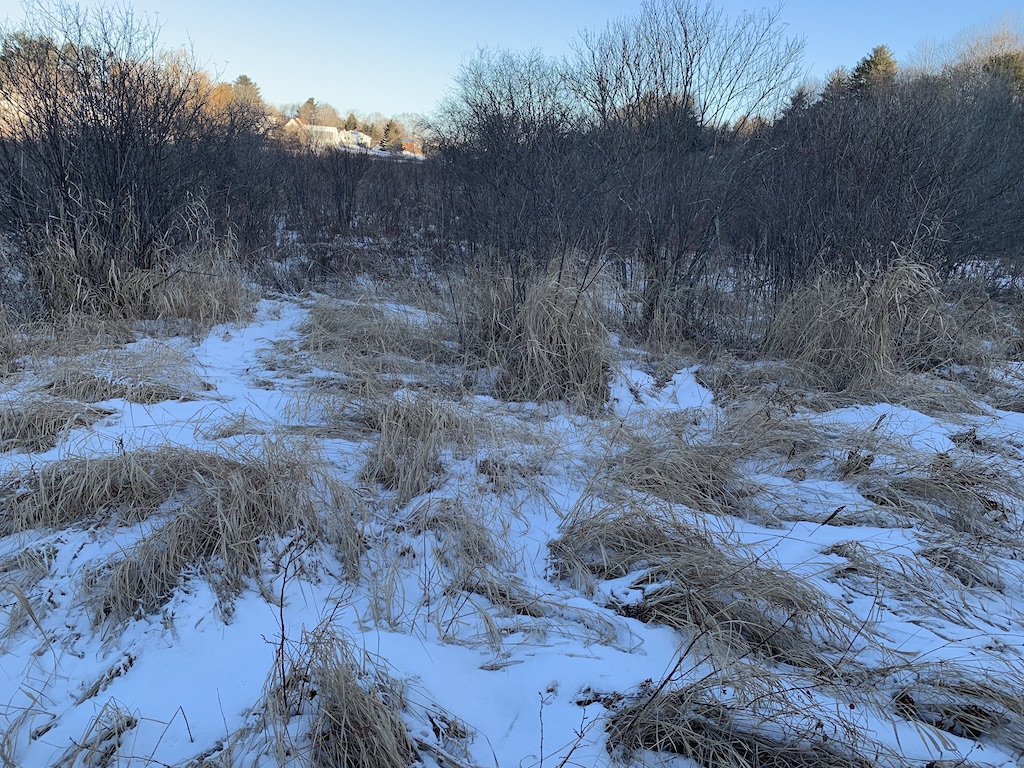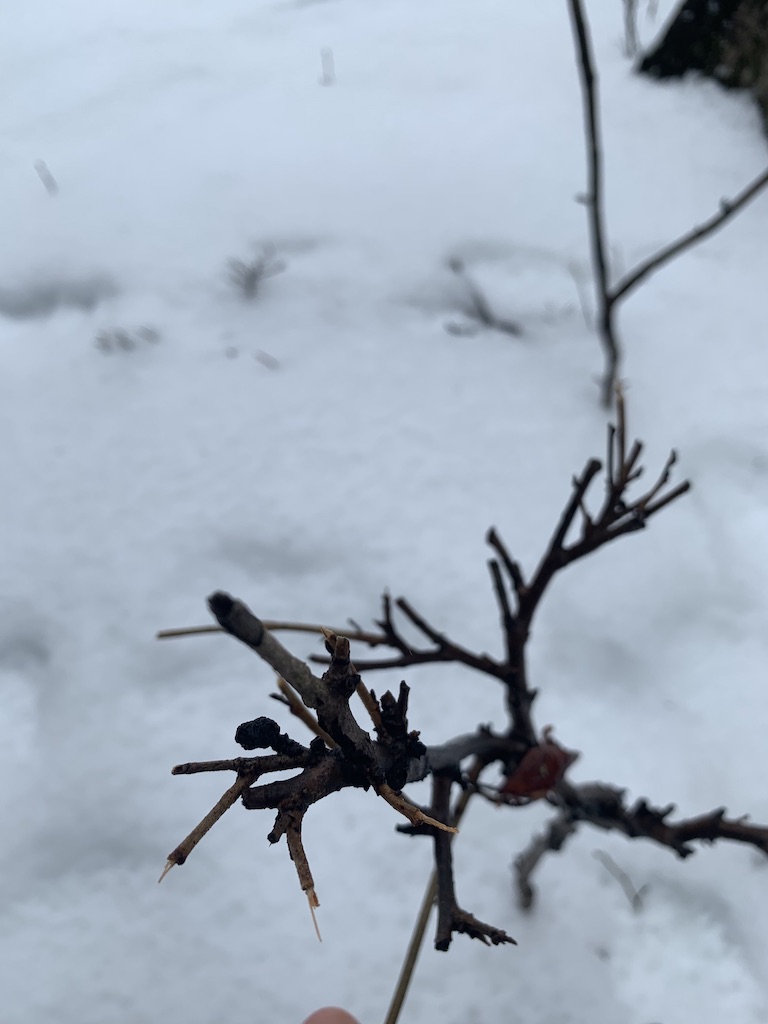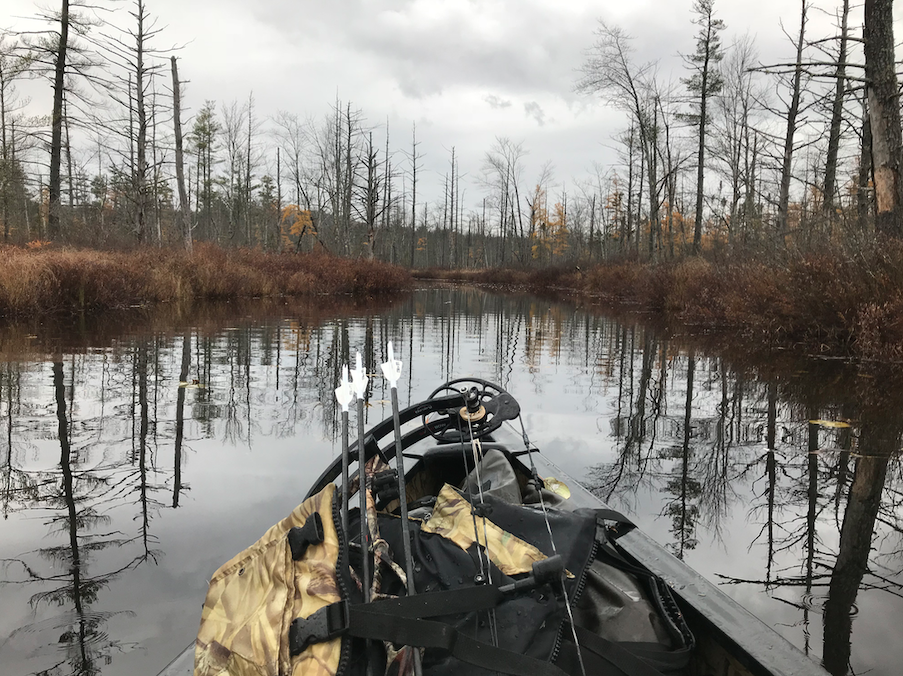Last Updated on January 12, 2025 by Jason Tome
You can increase a small property’s ability to hold deer by improving habitat that will make deer want to remain on your property for longer periods. If you give them everything they could want, they will have less of a reason to leave. Below I explain how to improve your habitat to hold deer on your small property.
Table of Contents
Small Property vs Large Property
My degree in wildlife ecology, combined with over 20 years of hunting deer, and my current job as an environmental consultant has given me a wealth of information regarding deer behavior and deer habitat. This experience has had me on hundreds if not thousands of properties. Properties ranged from the northern big woods of Maine and New Hampshire to small properties of the more developed southern Maine. Through these experiences, I’ve seen all kinds of properties from all sizes, some that hold deer and some that don’t. By seeing the differences in these properties I’ve been able to distill what works for holding deer on small property.
What I have come to realize is that a property’s ability to hold deer has less to do with the size of a property and more to do with the habitat a property offers. Of course, all things being equal a larger property has more potential to hold deer but a small property with excellent habitat will outperform a large property with poor habitat every time. I can’t tell you how many times I’ve scouted large properties and found little deer sign, then once I found a small pocket of high-quality habitat within that large property it was like a whitetail zoo.
Does this mean that deer never leave these small pockets of high-quality habitat? No, it doesn’t. It is just about impossible to hold deer on a small property permanently. However, steps can be taken to greatly increase a small property’s ability to hold deer for longer periods. More time spent on your property increases hunting season success.
Hold Deer On Small Property With High-Quality Habitat
Naturally, deer will gravitate to their preferred habitat. By creating this habitat on your small property it becomes much more attractive. This will lead deer to spend a disproportionate amount of time on your property because they have less of a reason to leave.
The type of habitat to be created will depend on the individual property. Creating a high-quality habitat will give deer a reason to start using your property more frequently. If your property is lacking in some areas then deer will go elsewhere to seek what they need.
It’s helpful to know the plants deer hunters should know to understand what vegetation might be best to implement on your small property.
Basic Habitat Requirements
The basic habitat requirements of a whitetail are food, water, and shelter. Creating high-quality versions of each of these will limit deer movement off your property. There are many ways to create high-quality versions of these. Some of these ways consist of sanctuaries, bedding areas, food plots, clear cuts, hinge cutting, screening cover, and water hole creation. These are just a few of the many great ways to improve basic habitat requirements.
Additionally, deer habitat changes throughout the year. It is important to consider habitat that reflects what time of year you want deer to be using your property. For example, if you only want deer on your property during the hunting season you might not want/need to create deer summering habitat.
Landowner goals and individual property needs will be different for each property. For this reason, every property will require a customized approach when implementing habitat improvements. This will ensure a proper balance that will maximize a small property’s potential to attract and hold deer based on its characteristics.

Assess Neighboring Properties
Poor Habitat On Neighboring Properties
Understanding habitat characteristics on neighboring properties will help you determine your property’s potential to hold deer. If neighboring properties have poor habitat, then there is a good chance your small property could benefit greatly from habitat management.
If neighboring properties don’t have good whitetail habitat then creating high-quality habitat on your small property will be extra appealing for deer. By having the best habitat in your area you are going to attract new deer to your property.
This means deer will spend more time, or even take up residence on your property. Even if your property is small it will hold deer over neighboring properties with poor habitat.

Create Better Habitat Than Neighboring Properties
If neighboring properties do have good whitetail habitat, then creating high-quality habitat on your small property will be even more important. Better whitetail habitat on neighboring properties will give deer little reason to come onto your small property. Creating high-quality habitat on your property will level the playing field. It will also give deer a reason to start using your property more frequently.
If neighboring properties do have good deer habitat this is a good thing. Although deer may not be as permanent on your property as you would like, the herd, in general, will be healthier and it is more likely to produce bigger bucks as a result. But that does not mean you shouldn’t do everything in your power to get those bucks to stay on your property as much as possible.
Understanding what habitat components neighbors do and don’t have, and to what degree, will enable you to make educated choices on what habitat strategies your property needs. This will allow you to effectively compete with neighboring properties.
Pressure On Neighboring Properties
Pressure on neighboring properties is another way to gauge how effective your small property will be at holding deer. Quality deer habitat becomes somewhat irrelevant if deer feel pressured. Deer are adaptive and catch on quickly. If hunting pressure is high on neighboring properties then it likely will not take long for deer to move somewhere they feel safe.
This is good news because pressured deer will relocate to your small property. As long as you have great habitat and take precautions not to alert deer on your own property then it is likely deer will remain on your property. This could easily lead to deer permanently taking up residence. It is crucial to make your property feel like it is as unpressured as possible for the best results. This way you aren’t scaring deer off your small property and back onto the neighbors. Taking care not to spook deer will greatly help to hold deer on a small property.
Low Perceived Hunting Pressure Is Key
Having low pressure on a small property is as equally important as having high-quality habitat. For example, you can have the best habitat in the world but if you’re pressuring deer on your small property then deer will not stay. Vice versa, you could have the lowest pressured property of all time, but if there is no quality habitat then deer have no reason to use your property.
Keep deer from discovering that you’re hunting them. If deer feel pressured they will adapt. If you’re repeatedly getting seen, heard, or winded by deer they are going to move somewhere where they feel safe.
Although low pressure hunting is important no matter what size your property is, it becomes especially crucial when trying to hold deer on small property. On small properties, there is little room for error. Mistakes that are made on small properties have larger consequences.
Give deer the illusion that they are not being hunted. For detailed information on how to achieve low hunting pressure while still hunting often check out Tips 5 through 10 on my post 15 Most Important Deer Hunting Tips of All-Time [2024].
Sanctuaries
Sanctuaries are very important for keeping deer on your property feeling safe. Creating dense cover where deer feel safe will allow them to use this sanctuary as a bedding area. Getting deer to bed on your property has many advantages. Bedding areas are one of the most important components to consider to hold deer on a small property. Deer spend most of daylight in their beds. Having high-quality bedding areas will greatly improve the time deer spend on your small property.

Holding Deer During The Rut Phases
It is difficult to hold deer on small property once the rut kicks in. Bucks can range for miles from their core areas in search of does. Although it is pretty much inevitable bucks will leave your small property during the rut, some steps can be taken to hold them as long as possible.
How To Hold Deer During The Pre-Rut
Once you’ve created a high-quality habitat that holds does, local bucks will want to be on your property during the pre-rut. This is because now that your small property supports a doe population there is more opportunity for local bucks to breed. With more opportunity to breed locally, they will be less apt to leave in search of does elsewhere. This helps hold pre-rutting bucks longer into the rut before they leave in search of does elsewhere.
Another way to hold bucks on your small property longer is by having a healthy doe-to-buck ratio. Ratios are pretty much impossible to manage on a small property. However, by talking to neighboring landowners you can come up with a plan to have an impact on the herd ratio.
A buck-to-doe ratio of 1:2 or 1:3 will keep bucks more likely to stay around than a tight 1:1 ratio. If this can be accomplished a healthy buck-to-do ratio will keep local bucks chasing local does for a longer time during the pre-rut. Less tight ratios will also reduce the likelihood of dominant bucks driving smaller bucks off your property.
Another way to keep bucks on your property a little longer during the pre-rut is by creating mock scrapes. Scrapes are used mostly during the pre-rut as a communication hub for deer. These hubs are abandoned once the rut kicks in. Placing mock scrapes on your property is a great way to keep bucks curious. This will keep them checking to see if any does have come into heat. Also, if bucks are leaving your property during this time, mock scrapes will give them one more reason to come back onto your property.
How To Hold Deer During The Rut
During the rut, bucks, especially mature bucks don’t completely throw caution into the wind. They still want to feel safe. Creating high-quality habitat that meets all of the requirements stated previously is crucial. This is because cruising bucks will prefer to use your property over others if done correctly.
Another benefit of having high-quality habitat that supports a doe population is that new bucks during the rut will be found cruising your property. If your property has high-quality habitat and healthy doe numbers then bucks will gravitate to your property over other properties. The reason for this is your property now has everything bucks are looking for during this time; does and safety.
Although local bucks have likely left at this time, the good habitat will hold new bucks during the rut. These new bucks will likely stay for a longer time. Quality habitat with a healthy doe population is good enough to keep their interest for a while.
How To Hold Deer During The Post-Rut
The post-rut is when some fawns start coming into heat later in the season. When this happens some breeding occurs. You can hold deer during the post-rut by creating high-quality late-season cover and food on your property. This will attract/keep does on your property, which will likely have fawns. Holding does and fawns on your property later in the season with quality late-season habitat is a great way to hold bucks during the post-rut.
Often with good late-season habitat, local bucks that were using your property as part of their core area during the early season will return towards the end of the rut. Having quality habitat for post-rut will increase the effectiveness of a small property to hold deer at this time.
To learn more about late-season habitat check out the Maine IFW: Managing Deer Wintering Areas in Northern, Western and Eastern Maine. If you are not from Maine there is still plenty of useful information to take away from this.
Create Deer Habitat On Your Small Property Today
Often small landowners abandon the idea of managing habitat on their property. This may be because you feel improving their habitat won’t make much of a difference. Or perhaps you think improvements will cost too much time and money, or you don’t know where to start.
Habitat management does not have to be expensive. A chainsaw with a little elbow grease will go a long way to improve the whitetail habitat on your small property.
Questions & Community
If you have more questions you can ask them on Facebook. You may also find answers to your questions on my YouTube Channel.
